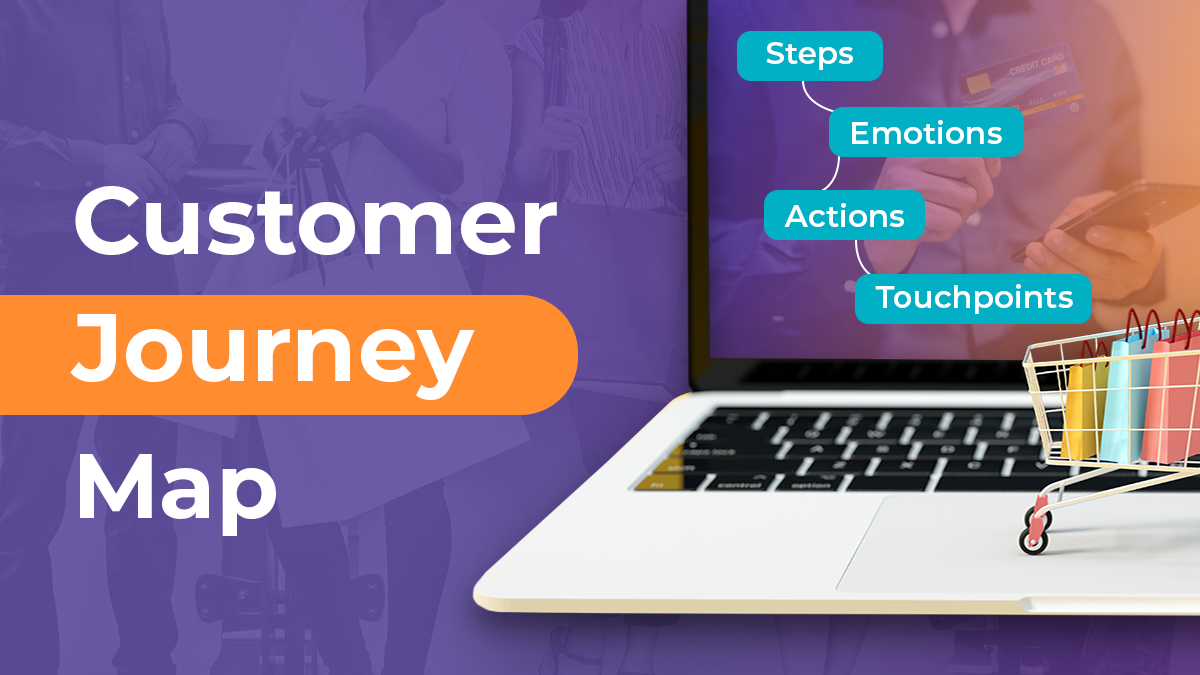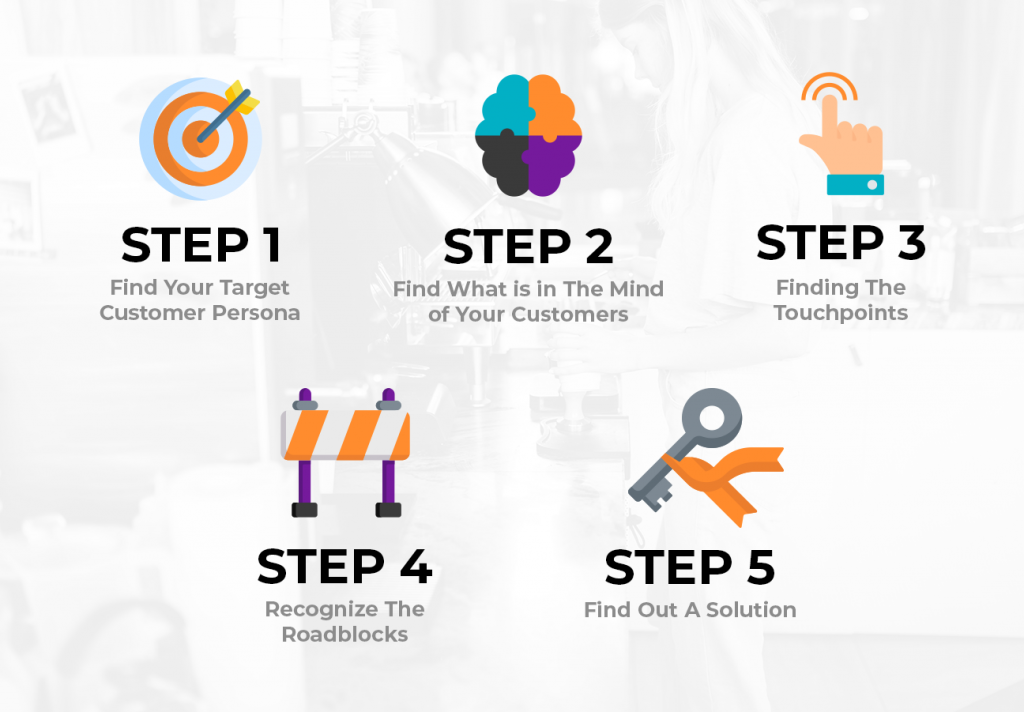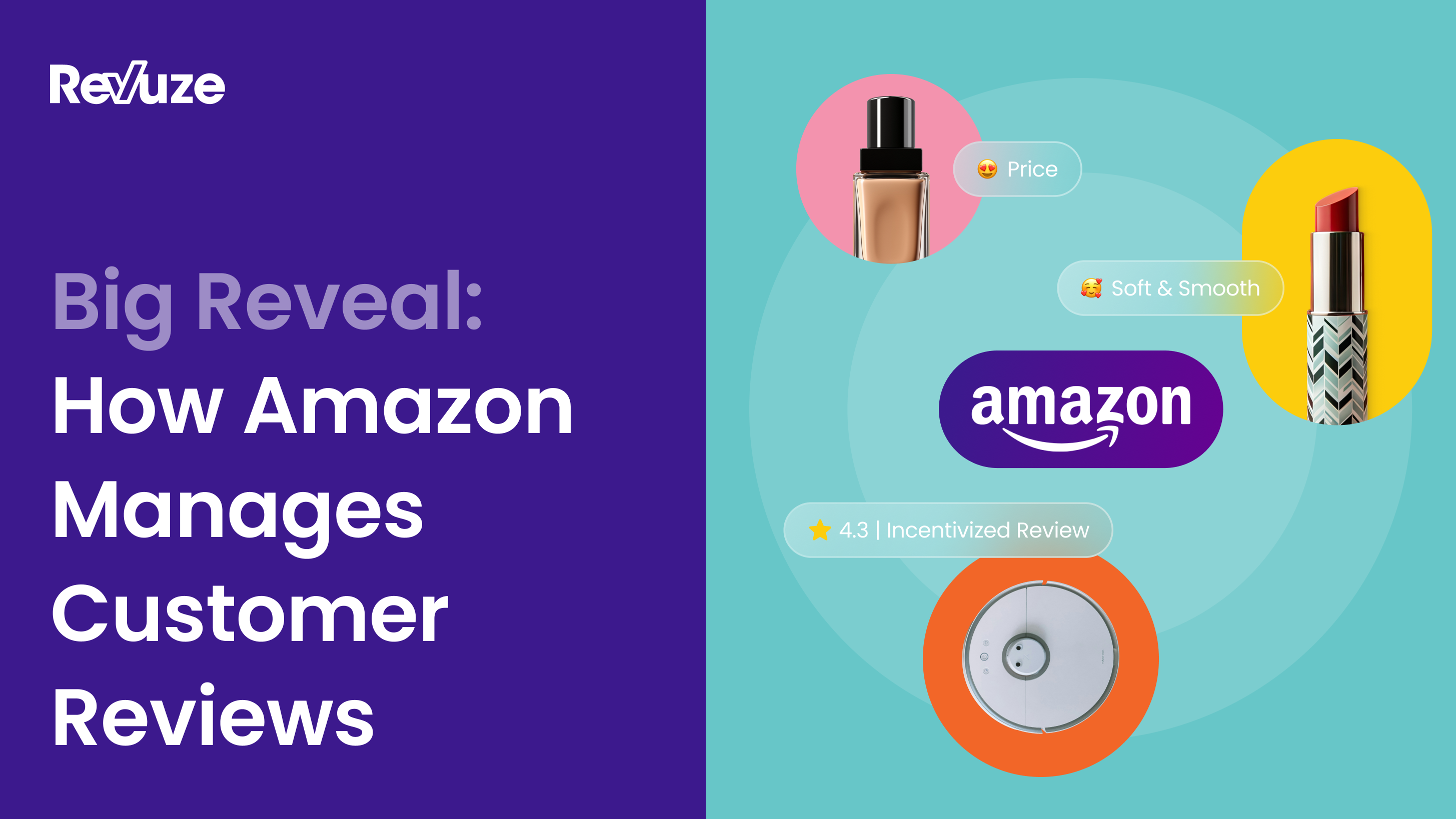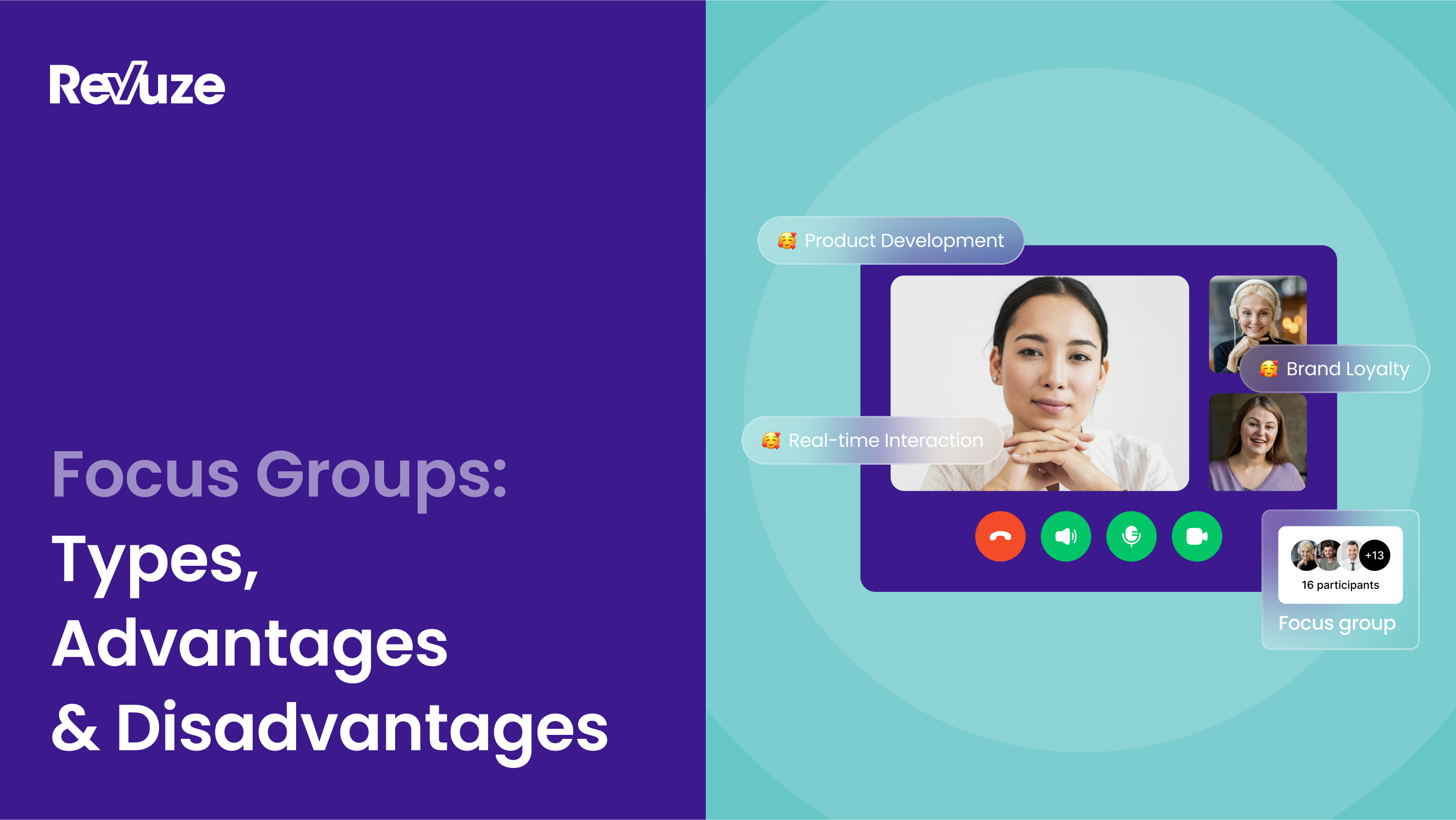
Businesses have to face an uphill battle to convince their potential customers to try their products.
Wouldn’t it be easy to convince a customer if you know what exactly your customers are thinking when they are planning to buy a product similar to yours?
Today’s customer uses an array of channels to look for solutions to their problems. Your business should be present on every platform where your potential customers might search for products or services you offer.
The customer journey consists of different touchpoints. You need to understand these touchpoints and make it easier for your prospects to notice your brand and convince them to start doing business with you.
What is a Customer Journey Map?
The customer journey map is a visual representation of the path that the prospects take to become your customers. It represents the entire customer journey consisting of steps, pain-points, needs, hesitations, and the different emotional states that the customers go through at every point of interaction with your brand.
Customer journey mapping is all about peeping into your customer’s minds and convincing them to make a purchasing decision. It helps you to look at your business from the customer’s point of view. Hence, you can figure out the expectations, needs, and trouble your customers have to face during the journey. You can’t do that unless you know the exact path your customers are taking to interact with your business at different stages of the customer journey.
Understanding the buying process of consumers isn’t enough. You need to represent the process in a format, preferably in an excel sheet that everyone can easily understand, which is what we call the customer journey map.
Let’s create a demo customer journey map to understand this process in a more natural way.
Step 1- Find Your Target Customer Persona
Before thinking of building a map, you need to be clear about who your customers are. As you might be dealing with multiple services or products, it is better to check multiple buyers’ behavior. The reason is every buyer responds differently at different stages of the journey.
Once you know this, it will be easier for you to set a direction for your map, specify your goals, and determine who you are building this map for.
We will discuss how to prepare a buyer persona in detail in the coming sections.
Step 2- Find What is in The Mind of Your Customers
Every customer thinks, feels, and acts differently. The next step is to know what their expectations are at the end of each phase during the journey.
You can determine it in several ways, like reaching out and getting their feedback. You can even use customer analytics tools for this task.
During the research, you can now spot different types of customer personas. But, it is advisable to pick only 1-2 types of personas to avoid confusion. Also, you have to focus on only those who take a specific path across the journey, which will help you to know the customer’s experiences accurately.
Step 3- Finding The Touchpoints
Touchpoints are the moments when customers are in touch with your brand. It could be while searching for information in the search engines while browsing the social media, while attending a webinar or while interacting with your customer support team.
Now, many of those touchpoints are worth looking at. They provide you with the opportunity to understand your customers. Fewer touchpoints may indicate your brand is not visible enough to reach the customers on every channel.
One of the best ways to learn about these touchpoints is by using Google Analytics. It has two useful reports to consider.
1- Behavior flow report
2- Goal flow report
Both these reports give you a deep understanding of the path the customers take to visit your website and their associated behavior.
We will discuss this in more detail in the coming sections.
Step 4- Recognize The Roadblocks
You now have all the data to identify the obstacles or roadblocks that hinder your customer’s journey. Analyze the data and list down those obstacles.
Point those phases where customers are more frequently leaving the site. Considering the stage, prepare a list of actions that you need to take to minimize the bounce back.
Step 5- Find Out A Solution
When you know the exact points where things are not falling right, your next step is to find the correction techniques. Here, you need to keep one thing in mind that your ultimate goal is not correcting every single hindrance but to pull the customer through the funnel. Therefore, look at your goal first and pick the roadblocks accordingly.
Once you are ready with your set of corrections to be made, start the process of making changes to the phases. After adjustments, review it to ensure that the issues with the customers are addressed at that point.
Besides, it would be best if you keep updating and improving your customer journey map from time to time, as the customer needs are changing every moment.

Customer Journey Mapping Templates
Here are two primary examples of customer journey maps you must have a look at.
1- The Classic Buyer Journey Template
| Buyer’s Journey | Awareness | Consideration | Decision |
| Steps | |||
| Emotions | |||
| Actions | |||
| Touchpoints | |||
| Pain Points | |||
| opportunities |
2- Day in the Life of Your Customers Template
| Buyer’s Journey | Morning | Afternoon | Evening | Night |
| What is the customer’s thinking /feeling? | ||||
| What are the customer’s needs? | ||||
| What are the customer’s pain points? | ||||
| What are the customer’s touchpoints with the business? |
The coming sections will discuss in detail how you can prepare the buyer persona and find the customer touchpoints using different tools.
Significance of Customer Journey Mapping
A customer journey map focuses on telling the story from the point where the customers find out about your brand to where they become loyal.
Customer journey mapping is quite an elaborate concept that every business owner should look forward to learning.
Your business website may be friendly from your point of view, but the customer may be finding it hard to navigate. It is sometimes challenging to get into the customers’ mind and know what they are thinking about.
For instance, some customers will log in to an online store, fill their carts, and leave without paying for them. Some site visitors may also find it challenging to trace some tabs on your business website like the fill out forms and CTA buttons.
Every business needs to understand what their customers are thinking about whenever they visit their websites. This can help them design their sites to meet their target customers’ needs.
With an effective customer journey map, a business can interact better with the customers and achieve its goals and objectives.
Let’s discuss some benefits of customer journey mapping and give you some valid reasons why you should invest in it to improve your customer acquisition and lead generation.
1- Discover Your Customers
Traditional outbound marketing campaigns have been successful for most companies.
However, sometimes if you intend to read your customers’ mind and offer them the best user experience on your site, you may have to adopt inbound marketing strategies.
The first step to adopting inbound marketing is finding out what drives people away from your website by conducting a website audit.
With inbound marketing, you can read your customers’ minds and understand what they want. You can work around creating content that your target customers are looking for whenever they browse the internet.
If you practice effective customer journey mapping, you can quickly tell what your customers need and begin creating content that makes them stay on your landing pages for long, thereby increasing your customer conversion rate significantly.
2- Create a Focused Customer Group
Ultimately, if you are not aware of your customers’ journey whenever they visit your site, you cannot tell more about their demographics and behavior.
Psychographics and demographics information is critical for market segmentation. By dividing your market into different parts, you focus on launching the best inbound marketing strategy for each group of customers.
A customer journey map helps you to narrow your customer base and begin creating quality content that targets addressing their problems.
It helps you to know the kind of people that are interested in your products and services. You can find out about the customers’ shopping behavior, like which time of the day or month they are most likely to buy in bulk.
With this broad picture of your customers’ buying behavior, you can now be selective with the type of marketing campaign that you choose for your online business.
3- Improve Customer-centric Marketing
Customer Journey Mapping is central to discovering, adapting, and improving a customer-centric marketing strategy.
Once your business grows to have many departments, it becomes a bit challenging to coordinate everything and still ensure that the whole organization knows what the final customers want.
If you have a clear customer journey map, you can share it across all departments in your organization. Your marketing team can then adopt a more reliable after-sale, customer service, and marketing strategy that aims at improving your customers’ experience with your brand.
Lastly, if you have all the information you need on customers’ behavior, you can change your product quality and improve your customer service desk. You may even adopt a marketing campaign you believe can increase your total sales and help you achieve your ROI.
4- Identify and Bridge the Gaps
In the process of coming up with a customer journey map, you are likely to discover more about communication gaps in your service and product delivery.
You will learn more about what limits customers to moving from point A to B whenever they visit your online store.
For instance, you may be having many steps that a customer must follow to transact on your online store. By reducing the steps customers follow on your site, you are likely to double your leads and increase your total sales in the shortest time possible.
Also, you find out that you are not using social media platforms accordingly to interact with your customers and answer the question they post about your brand.
Taking the right measures once you find out about these gaps can boost your brand reputation and help your stay ahead of the park.
A customer journey map helps you to quickly find out all the communication, operation, and marketing gaps in your organization and think of the best way to fill them up.
5- Mould the Touch-points
Your customers may be experiencing a lot of challenges on their journey to buying your products or accessing your services. Customer journey mapping helps you to fix all those challenges that customers experience with your brand.
With a customer journey map, you are in the best position to provide customers with the right information at the right time and place, thereby removing all the confusion in their journey.
Map Your Customer Journey: 7 Best Practices that You Should Take into Consideration
Creating and following the customer journey maps have proven to be one of the significant ways of converting prospective customers. The better you map the customer’s journey, the better will be the result. Finding and analyzing the data is the key to mapping the best customer journey.
Very few people convert on their first visit. It takes around five to twenty touchpoints to convert a lead to a sale. As a business, you would not want your customers to lose interest in your product as they move deeper into the sales funnel. You should offer them the best possible user experience. That’s why customer journey maps are crucial.
Customer journey maps display all the touchpoints customers come into contact with your brand, enabling you to provide the same experience across channels.
However, creating customer journey maps isn’t as easy as it seems. You have to know the entire timeline of each customer to offer the best possible experience and increase the chances of conversions.
Let’s have a look at the seven best practices to map your customer journey.
1- Know Your Company Goals
Customer journey maps that are created to support a business goal often leads to actionable results.
Some examples of company goals that customer journey mapping support include:
- Create a collaborative planning process for investing in customer experience-driven growth.
- Establish a new journey framework that applies to most of your customers.
- Understand how customer expectations of one group differ from the other.
- Grow your business by targeting a new customer segment.
- Learning about a specific customer segment’s purchasing behaviors.
- Offer the best possible user experience to each customer.
Without a specific goal, your customer journey map won’t be of any use.
2- Define Buyer Personas
Buyer personas provide an in-depth understanding of who your customers are, what they need, and how they interact with your business.
There are three stages to define buyer personas.
- Customer data
- Market research
- Social media analysis
Let’s have a look at each stage in detail.
Customer Data
You might already have tons of customer data that can help you create a detailed buyer persona.
Begin with analyzing your customers’ demographics to know who your customers are.
Open your Google Analytics and check Demographics under the Audience tab. It will give you an overview (age and gender) of your audience.
You can find where your customers reside by navigating to the Audience > Geo > Location. It shows every country from where you’re getting traffic.
When you click on any of the countries’ names, you’ll see a breakdown of where your visitors are from within the nation you chose.
Once you’ve specific states or cities in mind, you can use CityTownInfo to find more information, such as average income, household size, and education level.
Visit CityTownInfo.com and enter your desired place in the search bar.
Then click on the result that says “city information”.
You’d then see information like this.
The next step is to analyze the psychographics. It includes determining your customers’ personality, values, attitudes, interests, and lifestyle.
Psychographics is vital as it tells you why your customers behave the way they do.
One of the ways to find the psychographics information is through Google Analytics. Navigate to Audience > Interests > Overview.
Another way to find psychographic information is through online surveys. Create questionnaires and send an email to your existing customers. You might need to reward them for encouraging them to complete the survey.
If you have the budget and time, you can conduct one-on-one interviews with your customers to get as much information as possible.
Market Research
Customer data enables you to find information based on your existing buyers. Market research lets you gather insights based on your understanding of an ideal customer.
For example, if you sell fitness products, your ideal customer would be a cohort who take their physical health seriously.
Market research enables you to find common characteristics in your target customer base.
One of the ways to conduct market research is by reaching out to other businesses that have a customer base similar to yours.
In the case of fitness products, businesses that you can reach out to include gyms, sports centers, and swim pool complexes. People who visit these places are usually fitness freaks and are more likely to become your customer.
If possible, conduct one-on-one interviews with a few of their customers to better understand them.
Another way to conduct market research is through a Focus Group. It is a research tool that can help you gather information about customer sentiment about a business or product.
Also, conduct competitor research to determine what resonates best with your customers and what doesn’t.
Analyze what type of content your competitors focus on. Blog? Case studies? Videos? Do they have newsletters? Podcasts? What topics are they discussing?
This will give you a decent idea of what your target customers prefer to read.
Social Media Analysis
Social media analysis can help you understand where your customers are hanging out mostly.
Use the demographics data collected in the first stage to determine the ideal social media channel for your target customer.
For example, the share of the older generation using Facebook has nearly doubled in the past five years. On the other hand, 35% of Instagram users are between the age of 25 and 34.
Proper social media analysis will help you target the social media channels where most of your audience spends time on and filter out irrelevant ones.
Additionally, check which social networks are your competitors using? What kind of content are they posting? And how frequently?
This will give you enough information about your ideal customer to create buyer personas.
Combining the Data
Now that you have your target customers’ demographics and psychographics data along with the information collected during your competitor research and social media analysis, it’s time to combine everything. In the end, you’ll have your buyer persona ready.
The following example table illustrates what a buyer persona looks like for a business that sells fitness supplements.
| Characteristics | Details |
| Age | 65% between the age 18-25, 35% between the age 26-32 |
| Gender | 70% Male, 30% Female |
| Location | Arizona, California, and Texas |
| Average Income | $10,000 – $30,000 |
| Education Level | College-level and Graduate |
| Personality | Extrovert |
| Hobbies | Gym, sports, travel, and shopping |
| Social Networks | Facebook, Instagram, and YouTube |
| Preferred Content Types | Blogs about fitness and workout videos |
3- Understand the Buyer’s Goal
The next step is to understand what each buyer is trying to accomplish in their overall journey. To do so, you should identify which stage of sales funnel a prospect is in. One of the ways to determine this is by identifying what they are doing on your site. You can find this information in your website analytics.
For instance, if they are reading a blog, then chances are that they’re in the awareness stage. If they are on the features page, then they’re in the interest stage.
If they are comparing multiple products of yours, it means that they have made up their mind to buy from you and are on the decision stage.
Your customers’ goal in each phase would be different and may change as the process unfolds.
For example, if you sell protein powder, here’s how the buyer’s goal in each phase would look like.
Awareness: A customer searches for protein supplements in search engines. They come across your brand.
Goal: Find a brand that offers the right supplement for their needs.
Research: The customer has shown interest in your product but is probably comparing your product with your competitors. Also, the chances are that the prospect is reading reviews about your business and the product.
Goal: Ensure that they have all the necessary information about the product.
Choice Evaluation: The customer has chosen a few supplements and finished the research phase. The focus is on narrowing down the list to 2-3 products for the final choice.
Goal: To ensure that they are buying the finest supplement from the best company.
Purchase: At this stage, the prospect has made the decision to purchase and completes the transaction.
Goal: To have a smooth checkout process.
Other ways to understand the buyer’s goal includes:
- Survey/interview different customers and then use the information in your favor.
- Use popups on your website to ask the customer what they are looking for.
- Send different types of emails (informative, comparison-styled, and sales-oriented) and check which one they respond to.
- Identify what they search on your website.
By understanding your buyer’s goals, you will be able to provide them with the exact thing they are expecting from you.
4- Monitor Your Customer Behavioral Flow
Customer behavioral flow helps you understand how prospects move through your website. This is crucial as it uncovers how customers behave on each stage and what paths they take while navigating your site.
You can find how users are interacting with your website in your Google Analytics. Click on Behavior Flow under Behavior.
You can change the source to see how users from specific sources, media, campaigns, and locations navigate your website. This helps understand the difference in behavior between customers from different sources.
Examine how customers behave on each stage (awareness, research, choice evaluation, purchase, post-purchase).
For example, if you sell protein powders, your customer behavioral flow might look like this.
Awareness: The customer begins the search with the need for protein supplements. They land on your blog via a search engine or any other channel.
Key Metrics: Unique visits and pages viewed.
Research: The customer goes back to search engines and starts looking for the best protein powders. They come back to your website and browse your products.
Key Metric: Pages viewed
Choice Evaluation: Once the initial research is done, the customer starts evaluating the options to determine the best solution for their problem. They will probably be reading reviews of your products.
Key Metric: Time spent on each page
Purchase: The final choice has been made. The customer is ready to purchase from you.
Key Metric: Average order value
Post-Purchase: How the customer feels after purchasing from you will influence whether they are going to engage with your brand again.
Key Metrics: Support tickets raised, reviews, and repeat purchase.
Now combining all of the stages to create a customer flow report.
A customer visits your blog -> Checks your products -> Comes back to check your product’s features, price, and review -> Purchases your product -> Purchases again/never comes back.
This is just an example and might change depending on your business or product.
If a lot of customers drop-off during a specific stage, chances are the phase doesn’t provide what customers are looking for. It’s time to put yourself in customers’ shoes and check what’s wrong in that stage.
If you don’t see enough repeat purchases, maybe it’s time to reach out to customers and ask what went wrong. Are they satisfied with your product? Do they have any complaints?
This will help you streamline the customer behavioral flow and increase your sales.
5- Identify All The Touchpoints
A touchpoint refers to the places a customer comes into contact with your brand. It includes before, during, and after they purchase something from you.
For instance, a prospect saw your ad on social media, visited your website, read a few blogs, made a call, and then purchased from your retail store.
In this case, your ad, landing page, blogs, call, and checkout page are touchpoints.
The biggest benefit of identifying customer touchpoints is that it enables you to streamline the customer experience throughout the buyer’s journey.
For example, if a consumer has visited your product’s page, then your sales team can directly begin the conversation by giving information about the item they were browsing instead of asking for what they are looking for.
That way, you ensure your customers are satisfied every step of the way, thereby increasing the chances of conversion.
It’s a basic example but can have a massive impact on the customer experience.
List out all the places where customers are engaging with your brand. For example, your customer touchpoints could include:
Before Purchase:
- Social media
- Word of mouth
- Ratings and reviews
- Community involvement
- Ads
- PR
- Search engines
During Purchase:
- Website
- Offline store
- Catalog
- Promotions
- Sales team
- Chatbots
After Purchase:
- Billing
- Emails
- Support teams
- Website (for online help or visiting my account section)
- Follow-ups
- Thank you cards
These touchpoints could differ depending on your business and the products you sell.
To identify touchpoints, put yourself in your customers’ shoes and ask the following questions.
- Where do you go when you have a problem that needs to be solved?
- How do you discover a brand or product that will solve the problem?
- What encourages you to make a purchase?
- How do you interact with the business after the purchase?
You can also survey your customers and analyze the Voice of Customer (VoC).
6- Identify the Friction Points
Now that you know each customer’s touchpoints, it’s time to identify the pain points in each one. The friction points help determine what drives your customers away.
It could be as minor as a slow loading page or trouble logging in, but it can hamper the customer experience.
One of the ways to identify the pain points is by running customer feedback surveys at each major touchpoint.
Another way to identify friction points is by integrating customer experience management software. These tools are built primarily to monitor the user experience across your website and other channels.
Analyzing pages with the highest exit rates is another way to determine the roadblocks in the customer journey.
Once you have identified all the pain points, make efforts to solve them. For example, if you see a lot of people are abandoning your sign up process, then chances are it has too many fields or is complicated. It’s time to reduce the necessary elements.
7- Keep the Customer Journey Map Updated
Creating a customer journey map isn’t a one-time thing. Your customers are continually changing and evolving. Therefore, it is crucial to update your customer journey map frequently.
If possible, update and improve your customer journey map every six months. Also, make changes to the customer journey map every time you introduce significant changes in your website/products/services.
[Bonus] Reshaping Your Customer Journey Map after Covid-19 Outbreak
Everything changed in the last few months due to COVID-19. Social distancing has become the new norm. More and more people are turning towards online businesses as compared to their offline-only peers. As a result, you are left with more data in hand.
These two steps can help you reshape your customer journey map after the COVID-19 outbreak.
1- Make Your Customers Feel Safe
Customers need support and guidance to cope up with the uncertainties brought by COVID-19 pandemic. They would likely associate with brands that make them feel safe and support them during these overwhelming times.
Reach out to your existing customers (via email or phone) and let them know that you are open to business. Ask if they need any assistance with your product, and if they do, extend your helping hand to them.
Highlight what measures you are taking to keep your customers and employees safe even after the COVID-19 crisis has subsided.
2- Use Technology in Different Ways to Deliver the Best Possible Customer Experience
As mentioned above, customer behavior is changing. Consumers are more likely to avoid physical interaction as much as possible even after the pandemic has ended.
The three major ways that you can use technology to deliver the best possible customer experience, include:
- 24/7 uptime of services: Integrate a chatbot on your website to answer the most asked questions to your site visitors 24/7.
- Publish more interactive content: Interactive content such as a 3D graphic of a physical product can provide customers with a better idea of the item without actually touching them. If you sell digital products, you can conduct webinars to encourage interaction.
- Incorporate contactless payment services: Contactless payment services will become the new normal. Make sure your customers can pay using mobile wallets or near-field communication (NFC).
Final Thoughts
In a nutshell, the essential aspect of customer journey mapping is its ability to predict how customers are likely to behave in different circumstances. Every business must have some knowledge about how its target customers behave. With a customer journey map at your disposal, you have all you need to spot all the marketing, services, and operational inefficiencies that may be dragging your business behind.
A customer journey map helps you offer the best possible user experience to each client. Identify all the customer touchpoints and friction in each of the stages so you can streamline the buyer experience. With the information I have shared here about customer journey mapping, you can benchmark your brand and improve your service delivery to target customers. Last but not least, look for new ways to improve customer experience using technology post-COVID-19.
 All
Articles
All
Articles Email
Analytics
Email
Analytics








 Agencies
Insights
Agencies
Insights